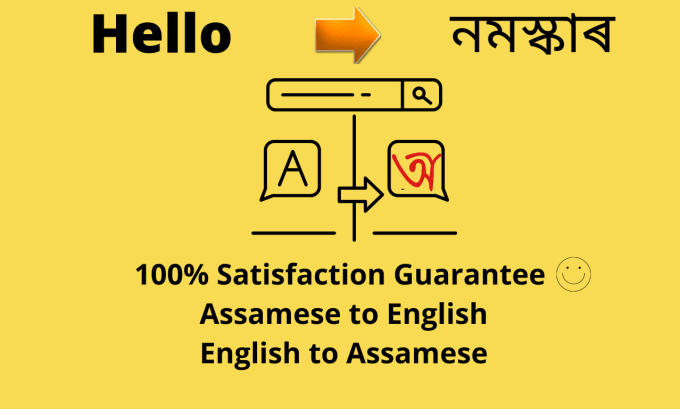In our globally linked world, clear communication in several languages is of the utmost importance. Due to the fact that English is a worldwide language, it has become more important to bridge the gap between English and regional languages such as Assamese.
In this article, we will discuss the relevance of English to Assamese Translation, as well as the many tools and resources that are available to make this process easier.
Understanding the Importance of English to Assamese Translation
The state of Assam, which is located in the Northeastern part of India, has adopted Assamese as its official language. Even though English is spoken and understood by a considerable portion of the population, there is still a sizeable portion of the population that chooses to speak in their own language.
Here is where translation from English to Assamese plays a crucial part, as it paves the way for efficient communication between those who speak English and people who speak Assamese.
A translation that is correct guarantees that information is presented accurately, which helps to encourage diversity and cultural understanding. Translation may take the form of translating papers, websites, or even conversations.
Challenges in English to Assamese Translation
Both English and Assamese come from distinct branches of the Indo-European language family, which makes translation between the two languages a challenging endeavor. The syntax, sentence structure, and vocabulary of Assamese are entirely distinct from those of other languages.
A comprehensive knowledge of both languages is required due to the possibility that certain ideas and phrases may not have direct translations in the other language. To guarantee that translations are true to the context in which they are being used, cultural subtleties must also be taken into account.
The need of using trustworthy translation methods and resources to accomplish the goal of producing high-quality translations is brought into focus by these issues.

Effective Tools and Resources for English to Assamese Translation
Online Translation Services: There are several websites on the internet that provide translation services from English to Assamese. These systems make use of cutting-edge algorithms and machine learning to produce translations in a prompt manner that are also relatively accurate.
Although these services might be useful for basic translations, it is possible that they would fail to capture the nuances of the Assamese language and the context in which it is used.
Also Read: Simplifying Language Barriers – English to Hindi Translation
Assamese Dictionaries and Glossaries: Dictionaries and glossaries of Assamese, both online and in print, are helpful tools for learning the meaning of individual Assamese terms and phrases as well as how they are used in the language. These materials assist to produce translations that are more accurate and contribute to the expansion of vocabulary.
Human Translation Services: It is strongly advised that, for papers that are either very significant or difficult, human translators who are proficient in both English and Assamese be sought out. Human translators have the language skill as well as the cultural understanding that is required to produce translations that are accurate and sensitive to other cultures.
Translation Software: The use of CAT tools, which stands for computer-assisted translation, may considerably improve the translation process. These tools provide assistance to translators in the management of terminology, the maintenance of consistency, and the general improvement of efficiency.
Language Learning Resources: Language learning tools like as textbooks, language courses, and mobile apps might be helpful for persons who are interested in learning Assamese or improving their translation abilities. The use of these materials offers a methodical strategy for achieving fluency in the language and comprehension of its intricacies.
Conclusion:
The English to Assamese translation process is very important to the process of bridging cultural gaps and improving interpersonal interactions. Although technological innovation has made enormous strides in the area of translation, it is still necessary to combine this innovation with the knowledge of humans in order to produce translations that are accurate and respectful of other cultures.
We can close the communication gap and make the world a more welcoming place if we make use of the tools and resources at our disposal.



